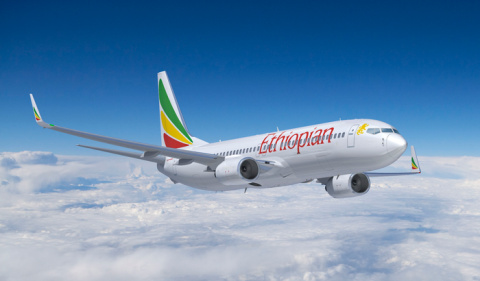Russia’s latest attempt to bolster its struggling fleet of commercial aircraft by leasing planes from Ethiopia has ended in failure. Ethiopia doesn’t want to have its aviation sector isolated by international sanctions.
Ethiopia’s Civil Aviation Authority (ECAA) rejected the Russian delegation’s request during talks in Addis Ababa in late July, saying it lacked the authority to instruct the country’s flag carrier Ethiopian Airlines to lease aircraft.
Ethiopian Airlines Group CEO Mesfin Tasew confirmed that no substantive negotiations had taken place with Russian officials and that no agreement had been reached.
“Russia is under U.S. sanctions, and Ethiopian Airlines has strong operational and commercial ties with the United States”, Tasew said. “We operate under international regulations and U.S. law, and we are not willing to take the risk of violating those laws”.
Tasew added that Ethiopian Airlines is actively seeking additional aircraft to meet growing demand for passenger and cargo transport, making a lease to Russia even less likely.
Russia had reportedly been pursuing a wet lease arrangement – where aircraft are leased with crew included – for use on domestic routes. The negotiations were led by Yaroslav Tarasyuk, Russia’s trade representative in Ethiopia.
Similar outreach efforts in 2024 to Kazakhstan, Kyrgyzstan, Kuwait and Qatar also failed to achieve agreed deals.
Since the full-scale invasion of Ukraine, Western sanctions have prevented Russian carriers from purchasing or servicing Western-made aircraft. Boeing and Airbus previously accounted for two-thirds of Russia’s commercial aircraft fleet and carried 90% of all passengers.
Without access to original spare parts or proper maintenance, Russian airlines have been plagued by technical failures.
There were 208 aviation incidents in Russia in 2024, up 25% from the previous year. Nearly half of those incidents were tied to engine failures or landing gear malfunctions.
In the wake of sanctions, the Kremlin announced an ambitious plan to revive the domestic aviation industry, promising to restore Soviet-era production levels and deliver over 1,000 Russian-made aircraft to airlines by 2030.
But Kremlin’s plan has largely failed. Only five aircraft have rolled off Russian production lines since the start of the war: three TU-214 jets and two IL-96-300s.
Under the original timeline, Russian carriers were supposed to receive five domestically produced aircraft in 2023, followed by 35 more in 2024 – including Sukhoi Superjets, TU-214s, MC-21 regional jets and IL-114-300 turboprops.
Annual production was slated to reach 120 aircraft by 2026, and more than 200 by 2028. But to date, Russian government realised that this is unreal for them.
© Times of U

